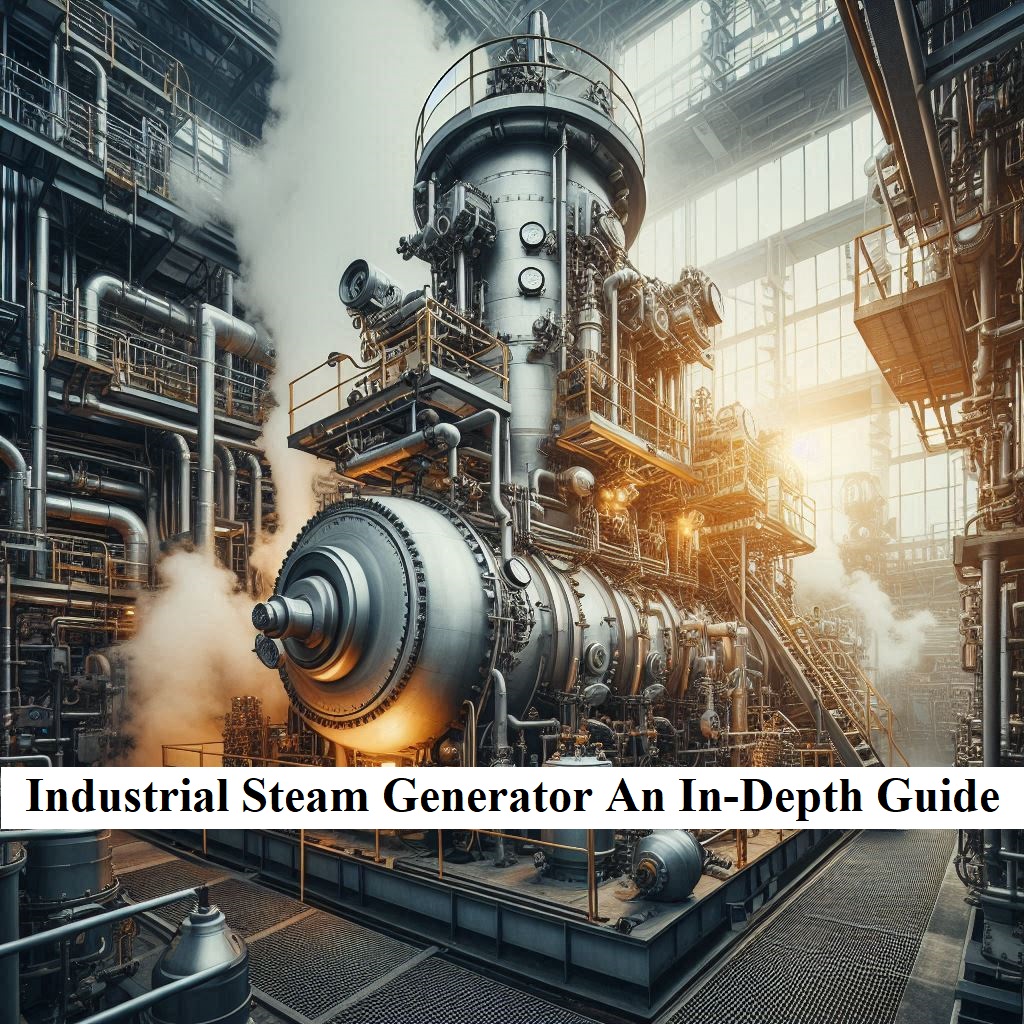
Introduction
Industrial steam generators are essential machines that produce steam for a wide range of applications in various industries. These generators convert water into steam through heating, playing a critical role in processes such as power generation, manufacturing, food processing, and chemical production. Understanding the intricacies of industrial steam generator can help businesses optimize their operations and maintain high efficiency.
History of Steam Generators
Early Developments
The concept of steam generation dates back to the early days of the Industrial Revolution. Early steam engines, developed by pioneers like James Watt, laid the foundation for modern steam generators. These early models were primarily used to power machinery and locomotives.
Evolution Over Time
As technology advanced, steam generators evolved significantly. The introduction of more efficient designs, such as fire-tube and water-tube boilers, allowed for greater steam production and safety. The 20th century saw the development of electric steam generators, further diversifying the types available for industrial use.
Types of Industrial Steam Generators
Fire-Tube Boilers
Fire-tube boilers consist of a series of tubes through which hot gases pass. These gases heat the surrounding water, converting it to steam. Fire-tube boilers are known for their simplicity and ease of operation, making them suitable for smaller applications.
Water-Tube Boilers
In contrast, water-tube boilers have water flowing through tubes that are heated externally by combustion gases. These boilers can handle higher pressures and temperatures, making them ideal for large-scale industrial applications.
Electric Steam Generators
Electric steam generators use electrical energy to heat water and produce steam. They are often used in environments where clean steam is required, such as in the food and beverage or pharmaceutical industries.
Components of an Industrial Steam Generator
Boiler
The boiler is the central component where water is heated to produce steam. It must be robust and capable of withstanding high pressures and temperatures.
Combustion Chamber
The combustion chamber is where fuel is burned to generate heat. This chamber needs to be designed to ensure efficient fuel combustion and minimal emissions.
Heat Exchanger
The heat exchanger transfers heat from the combustion gases to the water. Effective heat exchange is crucial for the efficiency of the steam generator.
Controls and Safety Devices
Modern steam generators come equipped with advanced controls and safety devices. These systems ensure the generator operates within safe parameters and can shut down automatically in case of an emergency.
How Industrial Steam Generators Work
Basic Working Principle
The fundamental principle of an industrial steam generator involves heating water to its boiling point to produce steam. This process requires a source of heat, typically from burning fuel or using electricity.
Step-by-Step Process
- Fuel Combustion: Fuel is burned in the combustion chamber, generating heat.
- Heat Transfer: The heat is transferred to water in the boiler through a heat exchanger.
- Steam Production: The heated water turns into steam and is collected in a steam drum.
- Steam Distribution: The steam is then distributed through pipes to where it is needed in the industrial washer.
Applications of Industrial Steam Generators
Manufacturing
In manufacturing, steam is used for various purposes, including heating, drying, and powering machinery. It is crucial in processes such as textile production, metalworking, and automotive manufacturing.
Power Generation
Steam generators are central to power plants, where they convert water into steam to drive turbines and generate electricity. This method is common in both fossil fuel and nuclear power plants.
Food and Beverage Industry
The food and beverage industry relies on steam for cooking, sterilization, and packaging. Steam ensures that products are safe for consumption and meet health standards.
Chemical Processing
In chemical processing, steam is used for heating reactors, distillation, and other critical processes. It provides the necessary temperature control and consistency required in chemical reactions.
Advantages of Using Industrial Steam Generators
Efficiency
Modern steam generators are designed to maximize efficiency, reducing fuel consumption and operating costs. Advances in technology have led to higher thermal efficiencies and better performance.
Versatility
Steam generators are versatile and can be used in a wide range of applications across different industries. This flexibility makes them a valuable asset for many businesses.
Environmental Benefits
Newer models of steam generators are more environmentally friendly, with lower emissions and improved fuel efficiency. This reduces their environmental impact and helps companies comply with regulations.
Factors to Consider When Choosing a Steam Generator
Capacity
The capacity of a steam generator should match the needs of your operation. Overestimating can lead to wasted energy, while underestimating can result in insufficient steam supply.
Fuel Type
Consider the availability and cost of different fuel types. Options include natural gas, oil, coal, and electricity. Each has its own advantages and disadvantages.
Efficiency
Look for steam generators with high efficiency ratings. Higher efficiency means lower fuel consumption and operating costs.
Maintenance Requirements
Choose a steam generator that is easy to maintain and has readily available spare parts. Regular maintenance is crucial for reliable operation and longevity.
Installation and Setup
Site Preparation
Proper site preparation is essential for the safe and efficient installation of a steam generator. This includes ensuring adequate space, ventilation, and access to utilities.
Connecting to Utilities
Steam generators need to be connected to water, fuel, and electrical supplies. Ensure that these connections are made according to the manufacturer’s specifications.
Initial Startup
The initial startup of a steam generator should be conducted by trained personnel. This ensures that the system is operating correctly and safely from the beginning.
Maintenance and Safety Tips
Routine Maintenance
Regular maintenance, including inspections, cleaning, and part replacements, is vital for the long-term performance of a steam generator. Follow the manufacturer’s maintenance schedule.
Safety Protocols
Implementing and following strict safety protocols can prevent accidents and ensure safe operation. This includes regular training for operators and adherence to safety guidelines.
Troubleshooting Common Issues
Be prepared to troubleshoot common issues such as leaks, pressure drops, and inefficient steam production. Having a troubleshooting guide can help quickly resolve these problems.
Innovations in Steam Generator Technology
Digital Controls
Modern steam generators are equipped with digital controls that allow for precise monitoring and adjustments. These controls enhance efficiency and safety.
Energy Efficiency Improvements
New designs and materials have led to significant improvements in energy efficiency. This reduces operational costs and environmental impact.
Environmental Innovations
Innovations such as low-NOx burners and waste heat recovery systems have made steam generators more environmentally friendly. These technologies help reduce emissions and improve sustainability.
Challenges in the Industry
Regulatory Compliance
Meeting regulatory standards can be challenging but is necessary for legal operation. Stay updated on regulations and ensure compliance to avoid penalties.
Cost Management
Managing the costs associated with fuel, maintenance, and upgrades can be difficult. Implementing cost-saving measures and budgeting effectively can help.
Technological Adaptation
Adapting to new technologies requires investment and training. However, staying current with technological advancements can provide a competitive edge.
Case Studies
Successful Implementations
Studying successful implementations of steam generators can provide valuable insights. These case studies highlight best practices and effective strategies.
Lessons Learned
Learning from past mistakes and challenges can improve future implementations. Documenting lessons learned helps avoid repeating errors.
Future Trends in Industrial Steam Generators
Green Technologies
The push towards green technologies is influencing the development of steam generators. Expect more innovations aimed at reducing environmental impact.
Automation and AI Integration
Automation and AI are becoming integral parts of steam generator technology. These advancements offer improved efficiency, monitoring, and control.
Market Growth Projections
The market for industrial steam generators is expected to grow as industries expand and modernize. Keeping an eye on market trends can help businesses stay ahead.
Conclusion
Industrial steam generators are vital to numerous industries, providing the necessary steam for various processes. Understanding their history, types, components, and applications helps in making informed decisions about their use. With advancements in technology and a focus on efficiency and sustainability, steam generators will continue to play a crucial role in industrial operations.
FAQs
What is the lifespan of an industrial steam generator?
The lifespan of an industrial steam generator typically ranges from 15 to 30 years, depending on maintenance and operating conditions.
How can I improve the efficiency of my steam generator?
Regular maintenance, upgrading to modern controls, and using high-quality fuel can improve the efficiency of your steam generator.
What safety measures should be in place for steam generators?
Safety measures include regular inspections, operator training, adherence to safety protocols, and installation of safety devices like pressure relief valves and automatic shutdown systems.
Are there any environmentally friendly steam generators?
Yes, there are steam generators designed with environmental considerations in mind, such as those with low-NOx burners and waste heat recovery systems.
How often should a steam generator be serviced?
A steam generator should be serviced according to the manufacturer’s recommendations, typically every 6 to 12 months, depending on usage and operating conditions.

